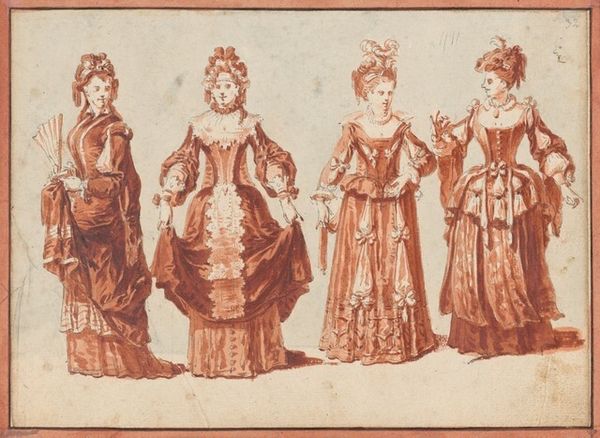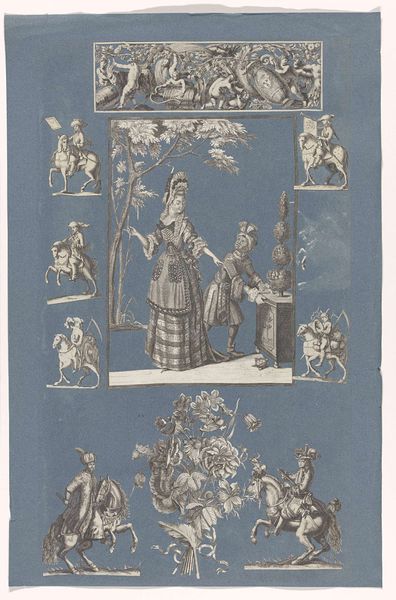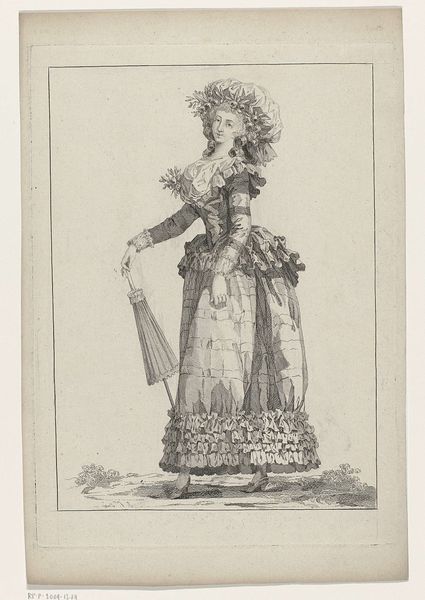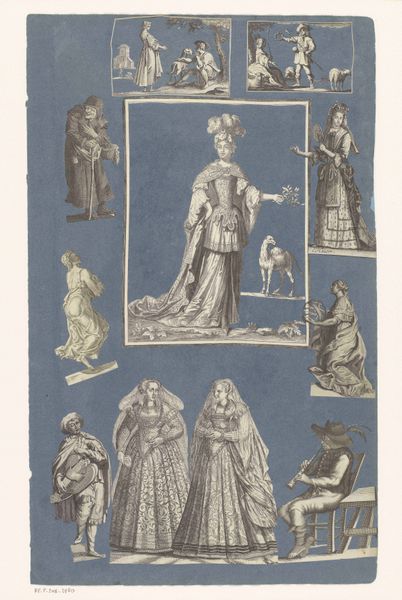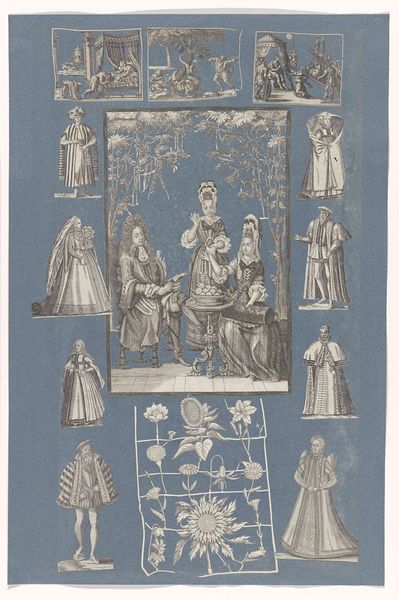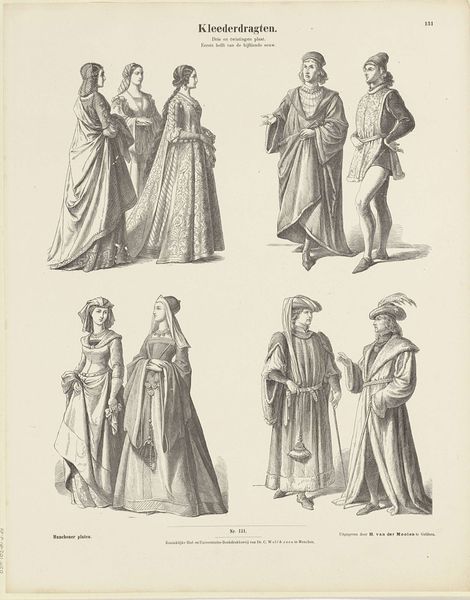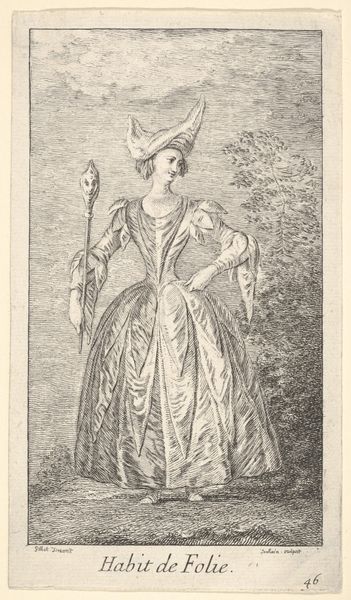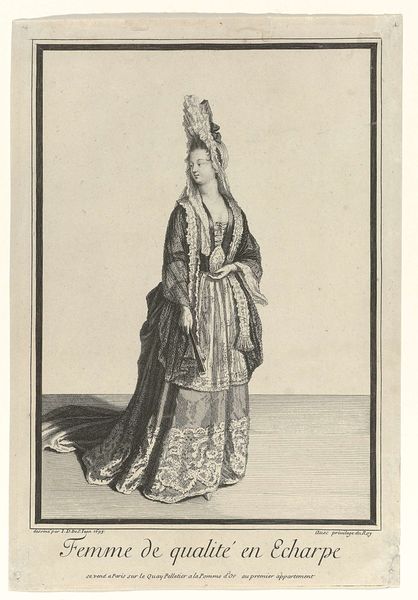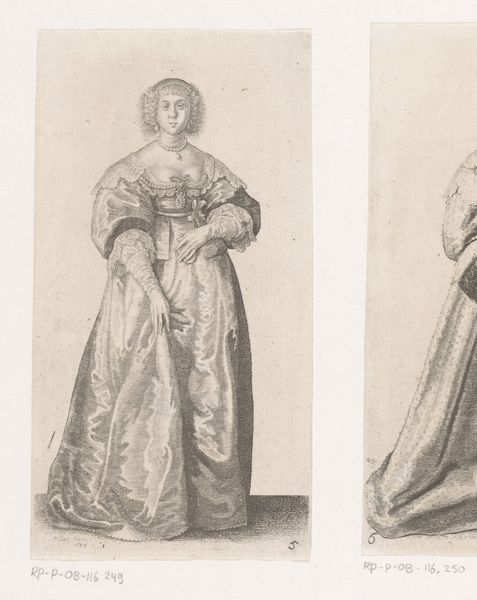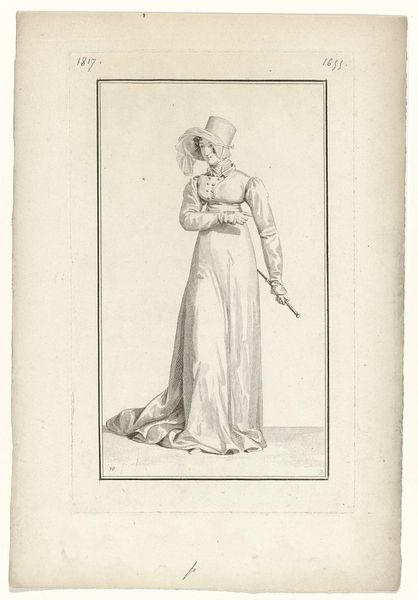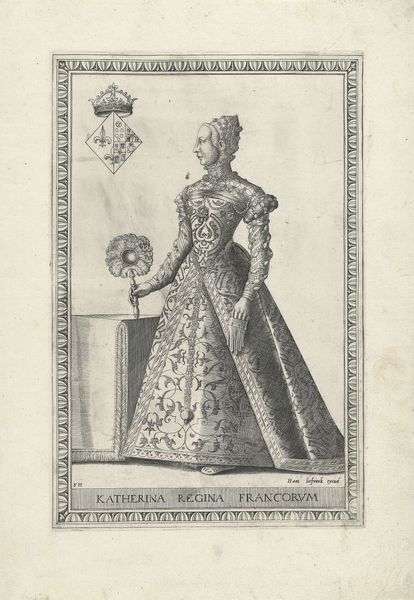
Collage van uitgeknipte prenten geplakt op albumblad van blauw papier c. 1585 - 1700
0:00
0:00
drawing, print, paper, engraving
#
portrait
#
drawing
# print
#
mannerism
#
figuration
#
paper
#
genre-painting
#
engraving
Dimensions: height 535 mm, width 400 mm
Copyright: Rijks Museum: Open Domain
Editor: This is a collage from around 1585 to 1700, made of cut-out prints pasted on blue paper, currently residing in the Rijksmuseum. It shows several figures dressed in elaborate clothing. The figures feel very staged and proper. What do you see in this work? Curator: It's fascinating to see how these figures, presented in isolation, participate in a silent performance. This collage allows us to investigate the power dynamics inherent in early modern fashion and representation. Each figure, meticulously placed, reflects a desire to categorize and understand social hierarchies. Who do these fashions seek to exclude, and why? Editor: So you see a story about social classes in how they're positioned on the page? Curator: Precisely! Consider the role of dress in signaling status, gender, and even political allegiance. These aren’t merely pretty pictures; they're statements of power and aspiration in a very structured society. We also need to remember how printmaking made images and, by extension, ideas accessible to wider audiences. What are the implications of circulating these images so broadly? Editor: I guess I hadn't considered how the method of production itself would influence the work's meaning. The clothing creates such a visible language. Curator: Indeed. Furthermore, the act of collaging—of taking these images and rearranging them—introduces another layer of meaning. It’s almost a proto-feminist act of reinterpreting and reclaiming these images within a different context. Do you think there's a playful disruption of the established order happening? Editor: I didn't catch that initially, but I can see that now. By rearranging these images someone questioned them. I see that, yes! Thank you. Curator: Absolutely. It highlights that art is never truly neutral. It reflects, reinforces, or resists the values of its time.
Comments
No comments
Be the first to comment and join the conversation on the ultimate creative platform.

